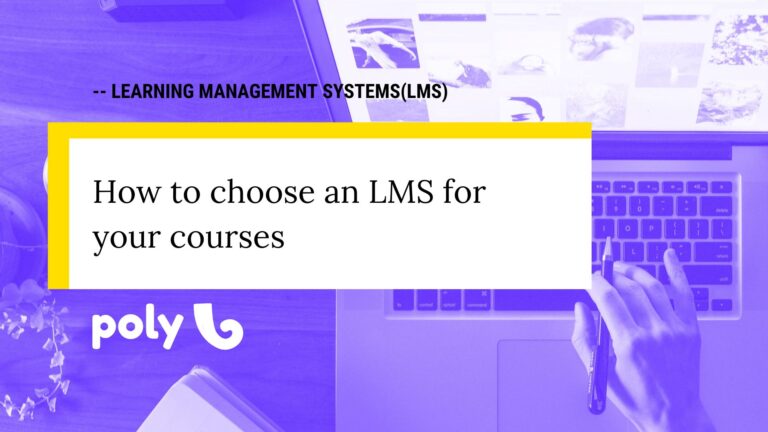What is instructional design anyway?
When thinking about implementing Customer education for the first time in their companies, people discover instructional design and then rush to consume all sorts of content and theories to take advantage of these techniques.
But what is instructional design anyway? And how can I take advantage of it to successfully implement a Customer Education strategy in my company?
Here we will learn what instructional design is, what the leading theories are, and how you should take advantage of studies in I.D. for your work.
What is instructional design?
An instructional designer applies studied and systematic methodologies to improve the instruction and learning processes.
All these methodologies are based on instructional theories and models. An instructional design professional plans and designs content, experiences and solutions to increase teaching and learning processes’ effectiveness, efficiency and efficacy.
Instructional design is also called pedagogical engineering or educational design.
Generally, it all starts with a needs and requirements assessment: what do you want to teach, and what do you want your students to perform once you’ve learned it? Then the designers will create the content and consider the materials, like teaching platforms, media, the content itself, presentations, etc.
Note: despite having “design” in the name, an instructional designer doesn’t necessarily understand graphic design – these are distinct areas. But it’s not uncommon for us to have some basic training. After all, an ID professional will likely create presentations, infographics and the like.
What does an instructional designer do in practice?
They research what is expected to be learned, the current state of the target audience (that is, the students), and what will be needed to provide to fill this gap between the desired future state and the present.
An instructional design then begins planning: from what kind of activities will be performed, content to be taught, formats, media used and technologies that will support delivery. Then, it will monitor the delivery to ensure it meets the quality standard and, of course, that the expected objectives are achieved.
Finally, the instructional design professional will assess directly with students, instructors or general performance to check whether the objectives were met. So they can improve the following content based on that feedback.
Where can an instructional designer work?
Using these activities as parameters, imagining an instructional designer working within academic areas or in traditional schools is more natural. And, in fact, it is perhaps even the most common. However, instructional designers go much further.
They can work within companies in enablement processes, corporate training, onboarding processes, and customer education.
A professional instructional designer can also work within open courses schools, whether online or in person, designing short, medium or long-term courses.
They can work specifically with the design of activities or training for teachers and instructors. Obviously, in the process of training, an educational designer has many opportunities to shine and contribute.
That is why an instructional designer can act when there are instruction, teaching and learning processes.
And, of course, an instructional designer can also be involved in planning the school’s overall curriculum and also planning public policy on these issues at the more macro level. At the most micro level, a designer can also be a content developer: creating ebooks, posts, books and presentations.
How can an instructional designer help with the Customer Education process?
It may seem evident at first that you want to have an instructional designer plan your company’s educational activities, but let me open my mind to more possibilities.
Hiring an instructional designer to create the course syllabus or to coordinate/supervise content recording and delivery is very, very limited. While, yes, they can work with it, an instructional designer has a think-first mentality: what do I need the student to do, and what’s the best way to deliver it?
The natural impetus for companies, whether HR, enablement, marketing or customer success departments, is to dig deep into instructional design theories, articles and free courses and apply the ADDIE model to build courses.
The most important point of Customer Education is to work on the content – format and quality. An instructional designer will consider your target audience and what formats would best suit working with them. Of course, taking into account what you already have and what means of distribution you have.
Is it a knowledge base, dedicated YouTube channel, course platform, in-app notifications, blog, or ebooks? Furthermore, a good instructional designer will be concerned with delivering speedy value with very high quality. It won’t put together a 300-hour video framework to launch from there.
A good instructional designer understands that something needs to be delivered now and tested – because no theory and planning survive real life. Even because the time to record and edit these 300 hours to teach software, for example, means that, at launch, the video tutorial will already need to be updated.
What are the main theories and techniques of instructional design?
Now that we have a more macro understanding of the roles of an instructional designer within the Customer Education process, I will go through the main techniques and theories.
Start with the instructional design process, which is close to the PDCA model but adapted to our context. The process involves analyzing, planning, developing, implementing and evaluating. From this basic premise, some conceptual models that emphasize one part or another, break one process or erase another, emerged.
Learning theories:
If you want to quickly dip into instructional design theories, you need to learn some concepts.
The first is educational goals. There is no planning and content creation without you clearly defining what you want your student to learn. An educational objective is a statement stating what is expected of that material. It can be student-focused (if you want to convince them to consume the content) or institutional (if it’s something more internal).
Taxonomies were created to standardize educational objectives so they are not vague and can be “checked”, taxonomies were created. There are several organizations, but the most famous is Bloom’s taxonomy. It creates a set of verbs that can be used as goals and what can be expected of your student.
Now that I have a goal, how do I deliver content to facilitate learning? For this, we have Gagné’s taxonomy. Essentially, Robert Gagné paired educational goals with instructional practices that allow goals to be achieved.
Now that you know why you want to teach and how it’s time for what to teach. For this, we enter the topic of creating the content itself. The content you should start with is activity mapping, in which you will describe what will be taught based on your goals.
I know, it’s a lot. It couldn’t be different. We are talking about a consolidated profession that has existed for decades. Don’t expect a free 1-hour blog post or course to learn everything.
Content planning templates:
So we have the ADDIE model, Dick and Carey model, SAM model, Cathy Moore mapping and agile prototyping. We have increasingly seen publications that bring instructional design closer to agile methodologies thinking. If you look for books on the topic, you will see that the entire base is very old; and there have been some attempts by innovation and design-thinking enthusiasts to bring the worlds together.
- There is no better theory. Each one addresses different needs. I recommend the ADDIE model if you want a more traditional, robust and complete model.
- The SAM model is amazing for a succinct and practical approach focused on punctual actions.
- Agile prototyping will deliver small doses of fast content for fast, low-cost, no-commitment implementations.
What is instructional design and how can it help with my Customer Education process?
Finally, we must think of the instructional designer as the person who will make it easier for your target audience to achieve the outlined objectives. In the case of Customer Education, it is to perceive more and more value in your product or service. But also to help deliver that content through instructional theories, media planning and the correct use of technology.
When implementing the Customer Education area, it is tempting to think of a robust, innovative LMS, create a knowledge base, have tooltips in the product, and fill the onboarding training with instructional design theories.
But actually, none of this matters if you don’t know your educational objective, if everything is interconnected with a strategy with a broader vision than just the production of each isolated content and, of course, if there is no measurement of results.
That’s why, when you ask yourself what instructional design is, this is it, to tie all these concepts together and ensure the cohesive delivery of your Customer Education strategy.







